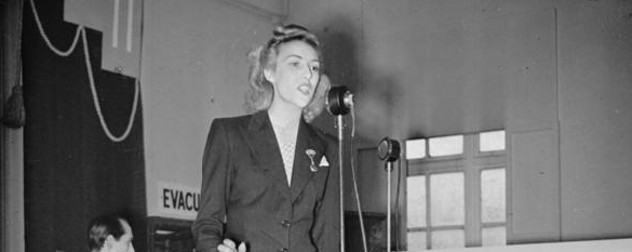In the long-ago Bronx where my parents lived and where I spent my childhood once I came along, it was not enough to know your neighbors. You cohabited with them.
Maybe it was a holdover from the time when immigrants crowded six or eight to a room in tenements on the Lower East Side of Manhattan, sharing limited bathroom facilities with other families. Yet this sounded, to me, like a lot of forced intimacy; I would have expected those people to treasure their privacy once they finally found some.
They could have found privacy in the Bronx, had they wanted it. The newer, bigger buildings in New York’s northern borough had more space, more light (a new city building code at the turn of the century required a spacious courtyard rather than tiny airshafts), and indoor plumbing in every apartment. You could have closed your front door and pretended there was nobody around you.
My parents did not do this. Neither did their contemporaries. Half the time, to hear them tell of life between the 1930s and the 1950s, they didn’t even bother to close the door, let alone lock it. Neighbors came and went at will. A lot of those neighbors were relatives, as the large prewar broods tended to stick close to the nest.
Parents did not have cell phones to summon their kids, who were usually playing in the streets nearby, but they didn’t need them. A window would open, a mother’s head would pop out, a voice would bellow down the street, and you knew it was time to go home. If an ice cream truck drove onto the block, blaring its music, coins wrapped in a tissue would drop to the sidewalk, like a military supply operation.
One day in the early ‘60s, a family with three young daughters moved into the apartment across the hall from ours. I remember the girls filing wordlessly into my bedroom to be introduced to me as though we were going to become a blended family. I was around 5 years old. “Don't wake up my baby brother,” I told them. “He’ll be mad.” The youngest daughter, who was about my age, became the closest thing I had to a sister. But we were not as inclined to stay in touch as our parents, and we did not have Facebook. We lost touch once we moved to different neighborhoods.
Later my parents had another next-door neighbor, a widow by the name of Charlotte, whose visits became a nightly ritual. She would come over at around 6:30 every evening for after-dinner coffee. We were never finished with dinner at that hour, so every night Charlotte discovered with surprise that we were still eating. “I’ll come back later,” she would say. My parents would insist she sit down, and so she would, joining the conversation and waiting for dessert to be served. It never occurred to anyone that Charlotte might be imposing on my parents’ hospitality or invading their privacy. She was their neighbor, so she had as much a place at the table as anyone else.
Occasionally, someone from the neighborhood became famous outside the Bronx. Bernie Schwartz was one of the kids on my father’s block until he became Tony Curtis, Hollywood leading man.
Over in my mother’s building on Simpson Street, a young singer named Fran Warren (known locally as Frances Wolfe) made her name singing for a series of big bands. I mentioned to my mother that nobody today knows who Fran Warren was.
“They know,” she replied firmly. And I am sure they do, at least in my mother’s circles, where they still listen to standards like “A Sunday Kind of Love.” But the name would not have meant much to most people my age or younger unless, perhaps, they had come across Reba McEntire’s cover version.
My mother went to James Monroe High School. A few miles away, young Edith Garmenzano attended William H. Taft High School. We all knew her when I was growing up - as Eydie Gorme, the female half of “Steve (Lawrence) and Eydie.”
Steve and Eydie never chased a baby boomer audience by performing rock and roll; we had Sonny and Cher for that. Steve and Eydie sang show tunes and “adult contemporary” hits, separately and as a duo. Eydie was older, a big-band product herself. She could really belt it in numbers like “I Wanna Be Around” (1966) and “Tonight I'll Say A Prayer” (1969). Steve (born Sidney Liebowitz), a cantor’s son, had a smoother and more soothing sound. He was from Brooklyn. Brooklyn might as well have been Mars. He was accepted in the Bronx, mostly because he had the good sense to marry a local girl and to stay married to her for 55 years, until her death on Aug. 10.
As a rule, we baby boomers did not care for the music our parents liked. It was different with Steve and Eydie. They were a comfortable backdrop to our youth. When they came on the radio or television, it was just like neighbors dropping in for that after-dinner coffee. It seems odd when I look back on it, because they were stars before I was born, and their lives centered on places like Las Vegas and L.A. But he was still a guy from Brooklyn, and she was still Eydie from the Bronx. Having them around was like having our parents’ friends sitting at the kitchen table. They belonged there.
According to Eydie’s obituaries, it was her mother who insisted that she keep her name, if only in truncated form. “It's bad enough that you’re in show business. How will the neighbors know if you’re ever a success?”
Neighbors really mattered back in the Bronx. I hope Eydie’s family knows that the neighbors are still around, dispersed as they may be, to sympathize with them in their loss.













August 21, 2013 - 7:25 pm
A super article. As a Baby Boomer my relatives of the Greatest Generation told me similar stories of the friendliness of neighbors in the ethnic areas of Cleveland Ohio in the 1930s.
For me, Eydie Gorme was the greatest female pop singer ever. Her vocal range and repertoire were unsurpassed. She had the prettiest and most youthful singing voice I have ever heard, regardless of age. Whether she sang torch songs, or songs that came out of the Brill Building, or Latin songs of Spanish or Brazilian origin or Broadway and show tunes, nobody was better. And her trademark high C vocal flourishes were legendary. Thank goodness were have her videos on YouTube and her albums are still available on CD via steveandeydie.com. Rest in peace sweet lady.